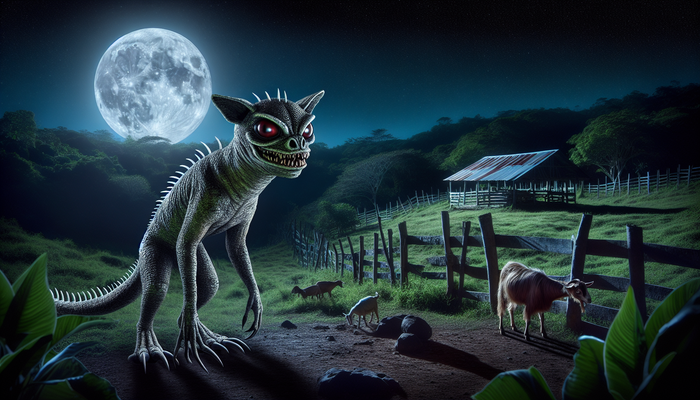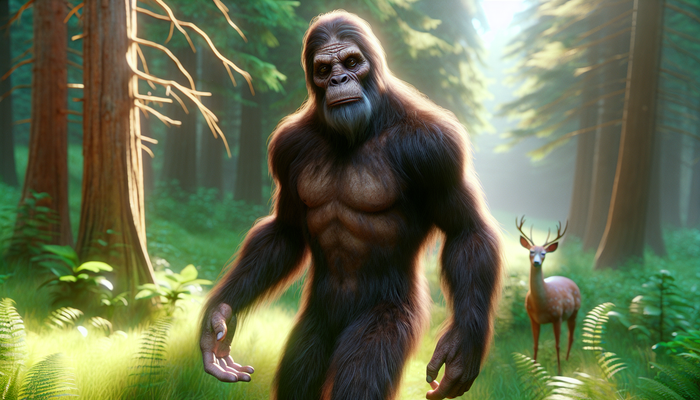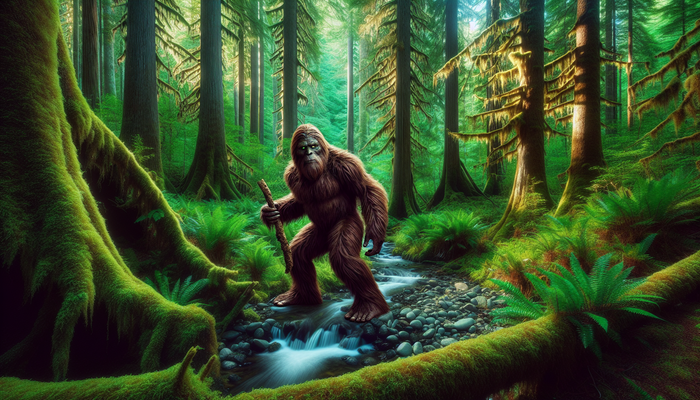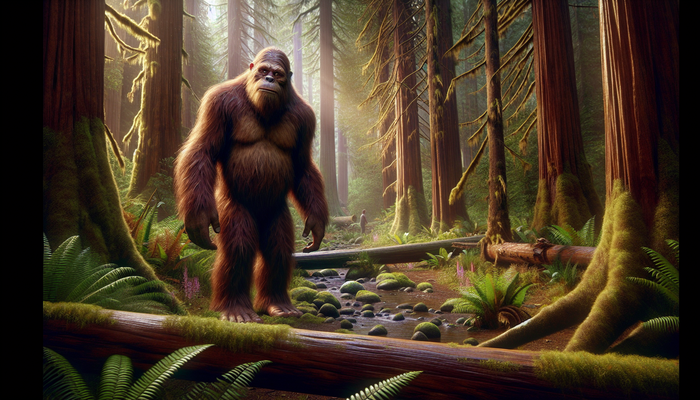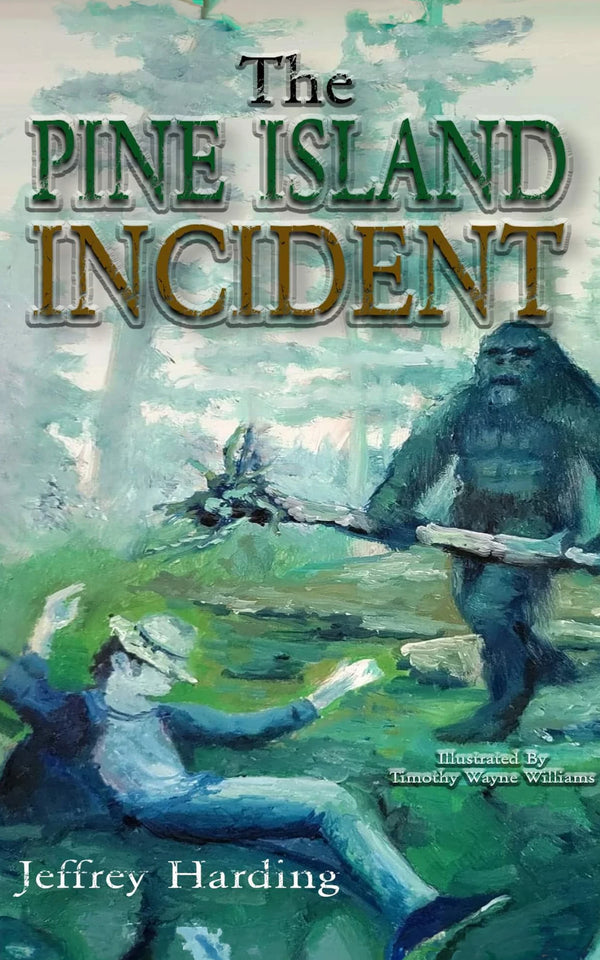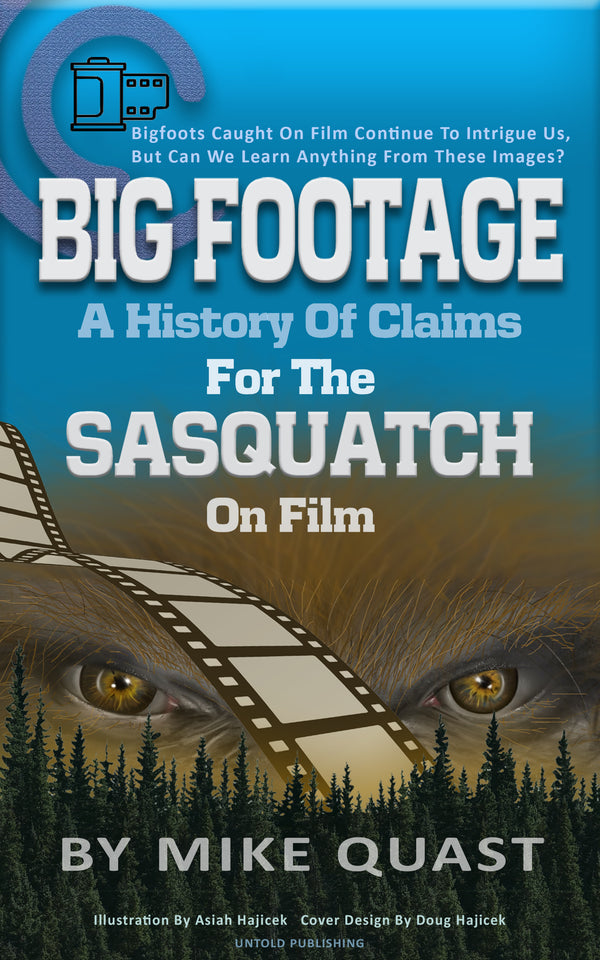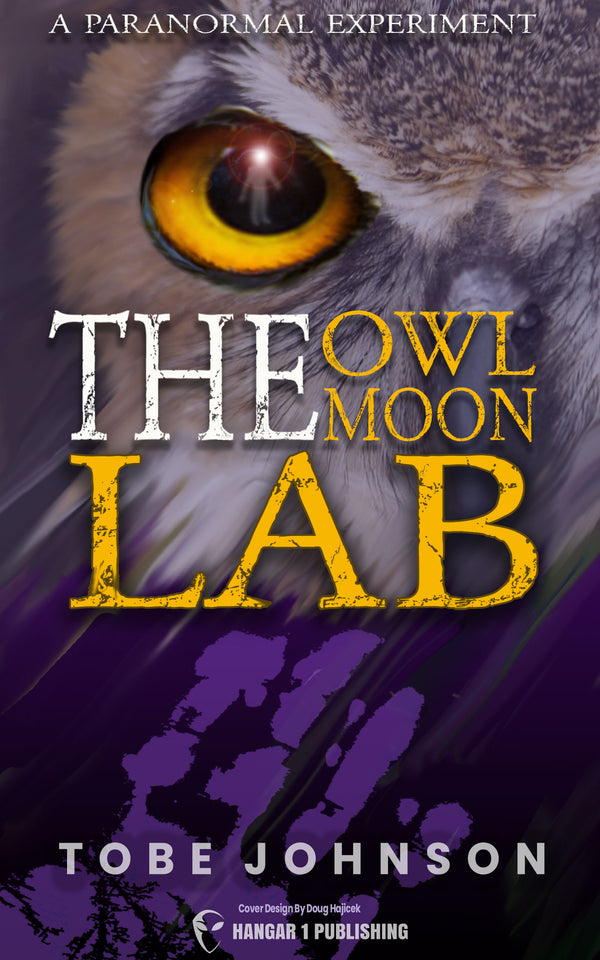Bigfoot Skepticism and Debunked Sightings: Unmasking the Myth

By Dr. Elizabeth Harper, Cryptozoologist
The Origins of Bigfoot: From Folklore to Phenomenon
Long before grainy videos and plaster casts entered the scene, indigenous peoples across North America shared stories of wild, human-like creatures dwelling in the forests. These tales varied by region, but many described beings that straddled the line between human and beast. The Sts'ailes people of British Columbia, for instance, spoke of the "sasq'ets," a shape-shifting forest guardian. It's from this word that we get the anglicized term "Sasquatch."
But the Bigfoot we know today—the pop culture icon that's spawned countless documentaries, reality shows, and questionable beef jerky commercials—didn't stomp onto the scene until 1958. That's when the Humboldt Times, a small Northern California newspaper, ran a story about mysterious, oversized footprints discovered near Bluff Creek. The paper dubbed the unseen track-maker "Bigfoot," and just like that, a legend was born.
Here's where things get interesting. In 2002, the family of Ray Wallace, a local logger, came forward with a startling confession: Wallace had created those famous footprints using carved wooden feet. It was all an elaborate prank that spiraled far beyond its creator's wildest dreams. This revelation should have been the stake through the heart of the Bigfoot myth. Instead, it merely added another layer to the creature's complex lore.
The Patterson-Gimlin Film: Cinema Verité or Costumed Caper?
If there's one piece of "evidence" that's become synonymous with Bigfoot, it's the Patterson-Gimlin film. Captured in 1967 by Roger Patterson and Bob Gimlin, this short clip shows what appears to be a large, hair-covered figure striding across a clearing in Northern California. For many Bigfoot enthusiasts, this grainy footage is the holy grail—irrefutable proof that Sasquatch is more than just a figment of our collective imagination.
But let's take a closer look, shall we? The film's supporters point to the creature's fluid gait and proportions as evidence that it couldn't possibly be a human in a costume. They argue that the muscle movements visible beneath the fur are too complex to be faked with 1960s special effects technology.
Skeptics, however, have a field day with the Patterson-Gimlin film. They note the convenient timing of its capture—right when Bigfoot mania was reaching a fever pitch. Some have even claimed to identify the man inside the suit, though these allegations remain contentious. Hollywood special effects artists have weighed in, stating that creating a convincing Bigfoot costume would have been entirely possible with the materials available at the time.
Perhaps the most damning evidence against the film's authenticity is the lack of follow-up. If Patterson and Gimlin truly captured footage of an unknown primate species, why wasn't the site swarming with scientists and researchers in the days and weeks that followed? The answer, it seems, is blowing in the wind—much like Bigfoot's hair in that infamous film.
Eyewitness Accounts: When Seeing Isn't Believing
"I know what I saw!" It's a refrain familiar to anyone who's delved into the world of Bigfoot research. Eyewitness accounts form the backbone of Sasquatch lore, with thousands of people claiming to have spotted the creature over the years. But how reliable are these sightings, really?
The human brain is a marvel of evolution, but it's far from infallible. Our perception can be easily influenced by a variety of factors, including stress, fear, and expectation. When we're in an unfamiliar environment—say, a dense forest at twilight—our minds are primed to interpret ambiguous stimuli in ways that align with our expectations or fears.
This phenomenon, known as pareidolia, explains why we see faces in clouds or hear hidden messages in songs played backward. In the context of Bigfoot sightings, it means that a person primed to believe in the creature's existence might interpret a shadowy figure or a rustling in the bushes as evidence of Sasquatch, when in reality, they're seeing something far more mundane.
Speaking of mundane explanations, let's talk about bears. A study published in the Journal of Biogeography in 2009 found a striking correlation between reported Bigfoot sightings and the habitat range of the American black bear. When a bear rears up on its hind legs, it can easily reach heights of 5-7 feet—well within the range often attributed to Bigfoot. Add in poor lighting conditions and a healthy dose of adrenaline, and it's not hard to see how a bear encounter could be misinterpreted as a brush with the legendary creature.
Notable Debunked Sightings: A Rogues' Gallery of Hoaxes
For every true believer in Bigfoot, there's a prankster eager to pull the wool—or in this case, the fur—over our eyes. Let's take a tour through some of the most infamous Bigfoot hoaxes that have been unmasked over the years.
We've already discussed Ray Wallace's wooden feet, which kicked off the modern Bigfoot craze. But Wallace was far from the only hoaxer to leave his mark on cryptozoology. In the late 1960s, the "Minnesota Iceman" made waves in the Bigfoot community. This frozen specimen, purportedly a Neanderthal-like creature, was displayed at carnivals and fairs across the country. Spoiler alert: it turned out to be a latex model, likely created for the carnival circuit.
More recently, we have the saga of Rick Dyer, a self-proclaimed "Bigfoot hunter" who has been involved in multiple hoaxes. In 2008, Dyer claimed to have found a Bigfoot body in Georgia. When the "corpse" was revealed to be nothing more than a rubber suit stuffed with animal entrails, Dyer admitted to the hoax. Undeterred by this embarrassment, he tried again in 2012, this time claiming to have shot and killed a Bigfoot in Texas. After much fanfare and a touring exhibition of the "body," Dyer once again confessed that it was all a fabrication.
These high-profile hoaxes are just the tip of the iceberg. Countless smaller-scale deceptions have been perpetrated over the years, from faked footprints to staged photographs. While some of these hoaxes are relatively harmless pranks, others have been motivated by the promise of fame or financial gain. Regardless of the motivation, each new hoax chips away at the credibility of those who genuinely believe they've encountered something unexplainable in the woods.
The Psychological Appeal of Bigfoot: Why We Want to Believe
Given the lack of concrete evidence and the prevalence of hoaxes, why does the Bigfoot myth persist? The answer lies in the complex interplay between human psychology and our relationship with the natural world.
For many, Bigfoot represents a connection to a wilder, more mysterious past. In an age where it seems like every corner of the globe has been mapped and explored, the idea that a large, unknown primate could be lurking in the forests of North America is undeniably alluring. It speaks to a part of us that yearns for adventure and discovery, a throwback to a time when the edges of maps were marked with "Here Be Dragons."
There's also a social aspect to Bigfoot belief. The cryptozoology community is tight-knit and passionate, offering a sense of belonging to those who might feel out of place in mainstream society. Sharing stories of encounters or participating in Bigfoot hunts can create strong bonds and a shared sense of purpose. For some, believing in Bigfoot is less about the creature itself and more about being part of a community that values wonder and possibility over cold, hard facts.
Moreover, the Bigfoot phenomenon taps into our innate pattern-seeking behavior. Humans are hardwired to find meaning in randomness, to connect dots even when there might not be a coherent picture. This tendency, while often beneficial, can lead us to see significance in coincidences or to interpret ambiguous stimuli in ways that confirm our pre-existing beliefs. In the case of Bigfoot, this might mean interpreting a distant sound as a Sasquatch call or seeing a face in the pattern of shadows and leaves.
Cultural Implications: Bigfoot as a Mirror of Society
The Bigfoot myth isn't just about a hypothetical ape-man roaming the wilderness—it's a reflection of our cultural values, fears, and aspirations. Throughout its evolution, the Bigfoot narrative has intersected with broader societal trends and concerns.
In the environmental movement, Bigfoot has become an unlikely mascot for wilderness preservation. Advocates argue that protecting large swaths of untouched forest is crucial not just for known species, but for undiscovered ones as well—including, potentially, Sasquatch. This connection to environmentalism adds a layer of respectability to Bigfoot research, framing it as part of a larger effort to understand and protect our natural world.
The tension between Bigfoot believers and skeptics also mirrors larger cultural divides. In an era of "fake news" and eroding trust in institutions, the Bigfoot debate becomes a microcosm of how we determine truth and evaluate evidence. For some, belief in Bigfoot represents a rejection of mainstream scientific consensus and a willingness to trust personal experience over expert opinion. For others, skepticism about Bigfoot is part of a broader commitment to critical thinking and empirical evidence.
Bigfoot has also become a significant part of local economies in areas known for sightings. Towns like Willow Creek, California, and Harrison Hot Springs, British Columbia, have embraced their Sasquatch connections, hosting festivals and erecting statues to attract tourists. This commercialization of the myth adds another layer of complexity to the Bigfoot phenomenon, blurring the lines between sincere belief, cultural tradition, and economic opportunism.
Scientific Consensus and Ongoing Skepticism
Despite decades of searching, the scientific community remains unconvinced of Bigfoot's existence. The lack of physical evidence—no bodies, no DNA, no irrefutable photographs—is a major stumbling block. From a biological perspective, the existence of a large, undiscovered primate in North America is highly improbable. Such a creature would require a substantial population to maintain genetic diversity, making it unlikely that it could remain hidden for so long in an era of satellite imagery and widespread human activity.
However, absence of evidence is not necessarily evidence of absence. Proponents of Bigfoot research argue that many species once thought extinct or mythical have later been discovered. They point to creatures like the giant squid or the coelacanth as examples of how the natural world can still surprise us. While these comparisons are intriguing, they overlook the crucial difference in habitat. It's one thing for a deep-sea creature to evade detection; it's quite another for a large land animal to do so in a continent as thoroughly explored as North America.
The future of Bigfoot research lies in the tension between open-minded inquiry and rigorous scientific methodology. While it's important to remain receptive to new discoveries, it's equally crucial to approach extraordinary claims with extraordinary skepticism. As technology advances, bringing us better cameras, more sensitive environmental DNA testing, and improved tracking methods, the window for Bigfoot's potential existence narrows. If Sasquatch is out there, it's running out of places to hide.
In the end, the Bigfoot phenomenon tells us more about ourselves than it does about any hypothetical creature. It's a story of hope, wonder, and the human desire to believe in something greater than ourselves. Whether you're a true believer, a staunch skeptic, or somewhere in between, the legend of Bigfoot invites us to question our assumptions, examine our relationship with the natural world, and ponder the fine line between the possible and the probable.
As we continue to explore the wilderness—both literal and figurative—that surrounds us, perhaps the most valuable lesson we can take from the Bigfoot myth is the importance of maintaining our sense of curiosity and wonder. In a world that often seems fully mapped and explained, the idea that there might still be mysteries out there, waiting to be discovered, is a powerful one. Even if we never find concrete proof of Bigfoot's existence, the search itself can lead us to new insights about our environment, our culture, and ourselves.
So the next time you're hiking through a dense forest and hear an unexplained rustle in the underbrush, take a moment to consider the possibilities. It's probably just a deer or a bear—but then again, in that split second before rationality kicks in, couldn't it be something more? In that moment of uncertainty and excitement, you'll understand why the legend of Bigfoot continues to captivate us, long after the plaster casts have crumbled and the grainy films have faded.
From Bigfoot to UFOs: Hangar 1 Publishing Has You Covered!
Explore Untold Stories: Venture into the world of UFOs, cryptids, Bigfoot, and beyond. Every story is a journey into the extraordinary.
Immersive Book Technology: Experience real videos, sights, and sounds within our books. Its not just reading; its an adventure.


